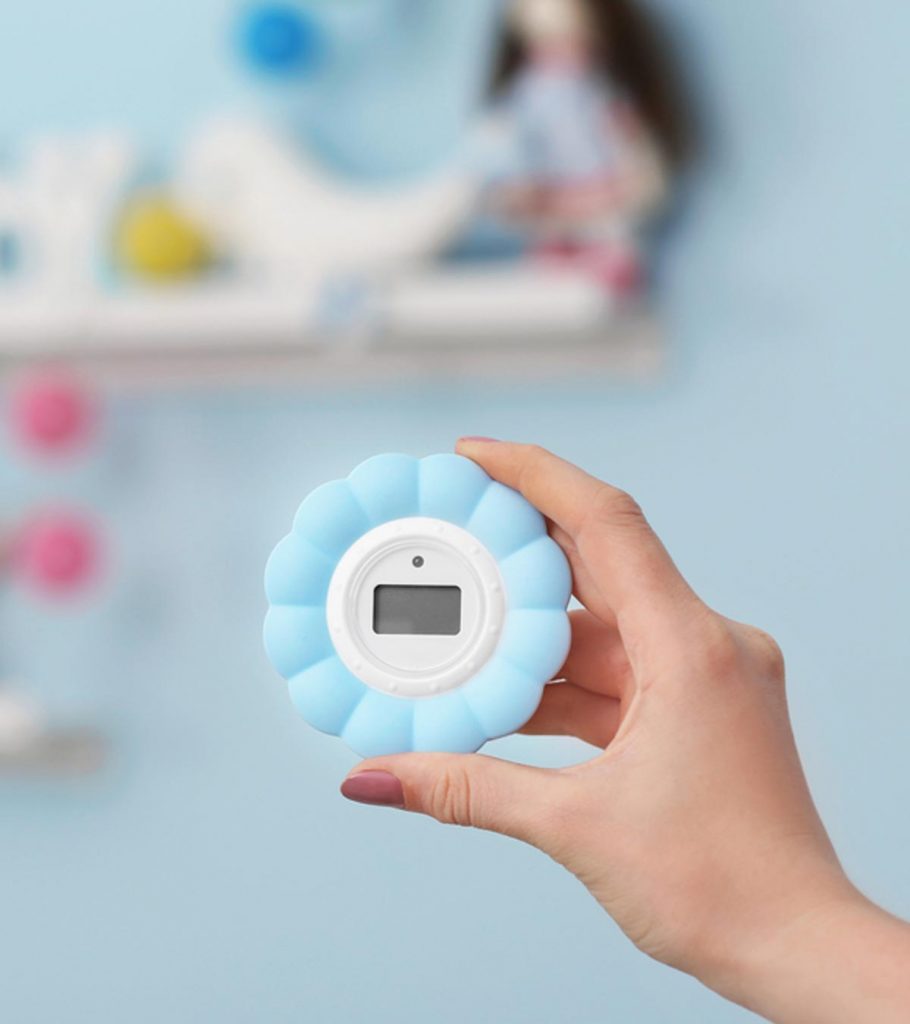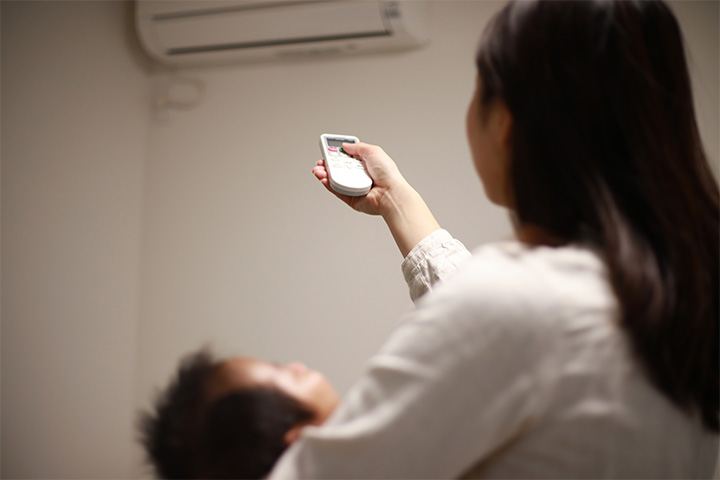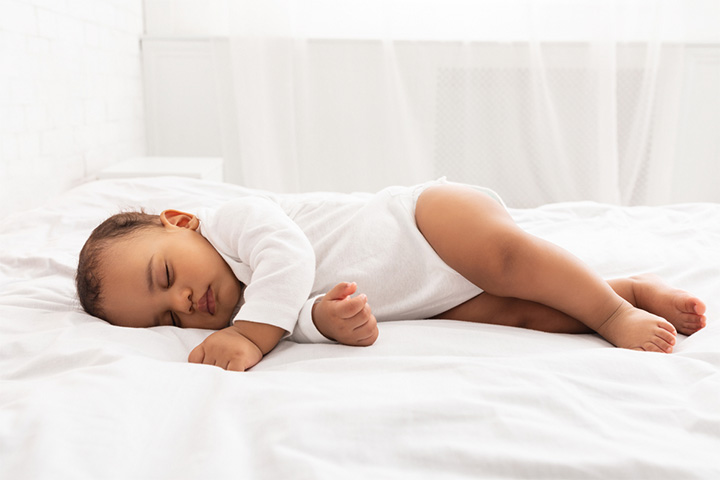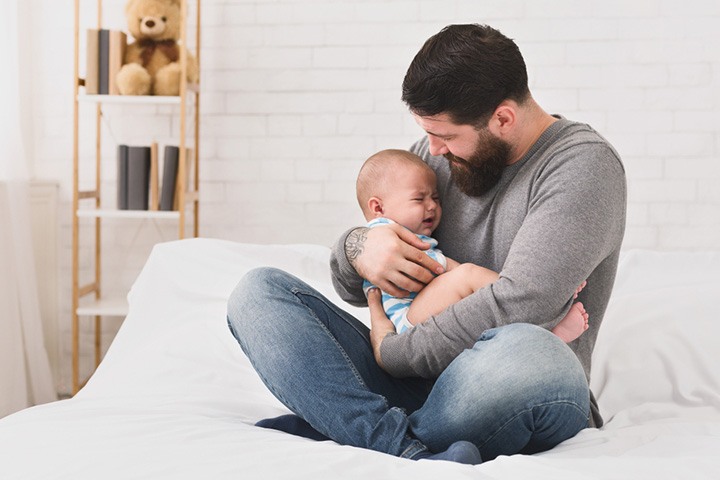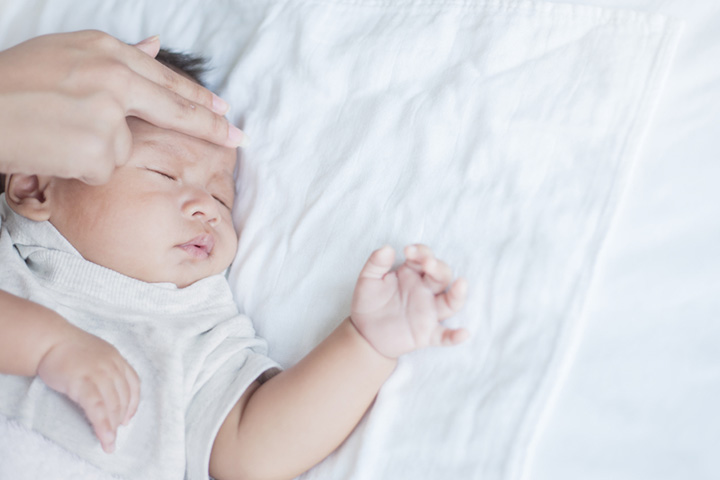Maintaining the optimal room temperature for babies can help them sleep well and stay comfortable during playtime. To maintain the room temperature, you may use thermostats, heaters, or air conditioners or close and open windows.
Most babies require the temperature to be regulated as per the season. Choosing baby clothes to keep your little ones warm and cozy or cool for the season is also necessary.
Read on to learn how to maintain optimal room temperature for babies and signs that indicate discomfort in babies.
What Is The Ideal Room Temperature For Babies?
According to sleep experts, the ideal room temperature for babies and toddlers is between 65 and 70°F (18 and 21°C), irrespective of the season(1). Babies cannot adapt to temperature changes, unlike adults. A baby can become overheated when the room becomes hot and easily feel cold when the room becomes cold (2) (3). Therefore, a comfortable room temperature range prevents rapid changes in the baby’s body temperature. It eventually helps the baby stay comfortable and reduces the risk of conditions, such as sudden infant death syndrome (SIDS) (4).
Managing Room Temperature For Babies
Parents can use themselves as the first reference point to check if the room temperature is comfortable for the baby. If you feel it is a bit cold or hot for you, then it is likely too cold or too hot for the baby.
You can place a room thermometer in your baby’s room to monitor the ambient temperature since the temperature can vary in different parts of the house. Maintaining the ideal room temperature could involve different steps based on the season. You could observe the following steps to maintain an ideal room temperature in different seasons.
Summer and warm weather
- Move the baby to the coolest room in the house during the summer.
- Cover the windows with thick curtains to prevent sunlight from heating the room during the daytime.
- You may leave a window open to let in the fresh air. Place wet towels on the window-opening to prevent hot air from entering the room.
- You may use a ceiling fan to circulate air throughout the room. If you intend to use a table fan or an air cooler, do not point it directly towards the baby. Place it at a distance from the baby’s crib and set a comfortable speed for the fan’s rotation.
- You may use an air conditioner to maintain an optimum temperature of 65–70°F (18–21°C). Maintain gentle airflow and keep the temperature constant.
Winter and cold weather
- Prefer keeping the windows closed during the baby’s bedtime to prevent cold air from entering the baby’s room. You may keep the windows open during the daytime to allow some fresh air in.
- You could set the thermostat to the ideal temperature range of 65–70°F (18–21°C). If you do not have centralized heating, you may use a space heater in the baby’s room to maintain warmth. Place the heater at a distance from the crib. Check the room temperature before placing the baby in the crib.
- If the room’s or nursery walls tend to become cold, place the crib away from them.
- Despite the cold weather, make sure there is adequate ventilation in the room. You may use a ceiling or table fan and set it to a low speed to circulate air within the room.
Rainy and humid weather
- You may have to make the room warm or cool, depending on whether it becomes cold or hot after rain in your region.
- High humidity may cause the ambient temperature to become cold or hot, depending on the regional weather. If it is hot and humid, have plenty of air circulation in the room. Use ceiling or table fans liberally to prevent humid air from accumulating in the baby’s room. You may use a dehumidifier if it is uncomfortably humid.
- If it is cold and humid, close the windows to prevent humid air from entering the baby’s room. Cold and humid air could make the baby feel colder than when it is cold and dry (5). Keep the room warm using a thermostat or space heater.
How To Dress The Baby During Bedtime?
You must dress the baby appropriately for the season to keep the baby comfortable during bedtime and daytime naps (6) (7).
- Dress the baby in loose cotton clothing during summer and warm seasons. If it is too hot, then it is okay for the baby to sleep in a diaper and a thin, single layer of clothing on the torso.
- Dress the baby in a couple of layers of clothing in cold weather. The baby can wear a diaper and undershirt topped by a onesie. You may also consider wearable blankets. Do not place loose blankets or sheets in the baby’s crib since it could increase the risk of suffocation.
- You may consider a sleeping sack appropriate for the baby’s age. Check if the bag fits the baby snugly and ensure it does not have any headgear, which could increase the risk of suffocation.
- Avoid putting hats, caps, or other head accessories on babies at bedtime. These may cause discomfort and may also slide down towards the baby’s face during sleep.
Signs That The Baby Feels Uncomfortable
Despite all your best efforts, a baby may begin to feel hot or cold. The easiest way to tell if the baby is feeling over heated or very cold is by touching the nape of the neck and checking the skin temperature there. Further, look for the following signs to determine if the baby is uncomfortable.
- If the baby’s skin is hot to touch and sweaty, it is a sign that the baby feels hot. An overheated baby is also likely to act fussy and cry.
- If you notice damp hair, flushed cheeks, and rapid breathing, the baby is likely feeling uncomfortably hot. In such cases, loosen the baby’s clothing and hydrate with water or breast milk.
- If the hands and feet are cold to touch, the baby is likely feeling cold. The baby may also seem disturbed and wiggle frequently.
- Frequent wet diapers at night may also be a sign that the baby is feeling cold.
- Babies may often sneeze and act fussy or stay too quiet when feeling extreme cold.
- A bright red and cold skin and lethargy could indicate hypothermia (8). Take the baby to a warm room immediately and dress them with multiple layers of clothing.
If the baby seems lethargic, irritated, dizzy, or has a fever, contact a pediatrician.
In most cases of temperature changes, a baby will wake up and cry, thus alerting the parents. The American Academy of Pediatrics recommends room-sharing, but not bed-sharing, up to the age of 12 months (9). It can help parents immediately spot any signs of discomfort in a baby due to room temperature changes.
Why Do Babies With Fever Need Fewer Layers Of Clothing?
A baby with a fever will have a higher temperature than normal. Dressing the baby in multiple layers of clothing may prevent the body temperature from falling down (10). A baby with a fever should be dressed in one thin layer of loose underclothes and a thin layer of loose over clothes. Maintain the same ideal room temperature of between 65 and 70°F (18 and 21°C). Speak to a doctor to know more about dressing your baby during a fever.
Babies are susceptible to their surroundings, and it is very important to ensure that they are comfortable. It’s important to keep your baby’s room at the right temperature, so they don’t become too hot or cold when sleeping. The right room temperature for babies ranges between 65-70°F. Therefore, use thermostats, heaters, or coolers in order to maintain the ambient temperature for your baby and ensure that you dress them in comfortable clothing to avoid them getting fussy and having disrupted sleep.
Key Pointers
- Sleep experts consider a room temperature between 65 and 70°F (18 and 21°C) ideal for babies and toddlers.
- Maintaining appropriate room temperature for babies is essential to prevent issues such as SIDS.
- Adjusting the room temperature and dressing the baby in weather-appropriate clothes are ways to keep your baby safe and comfortable.
- Checking their skin temperature, wet diapers, and skin color changes are signs that the baby is uncomfortable.
